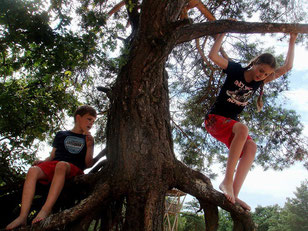Children's eyesight

The Bates Method is really successful with children because they’re highly receptive – able to absorb everything like sponges. Additionally, in younger children, there’s more physical plasticity and potential to change cellular structures. So, the younger, the easier.
Children also improve their vision faster than adults because they haven't grown up with bad visual habits like adults who’ve worn glasses for many years. So, they return to natural eyesight and clear vision easily and quickly.
Wearing glasses doesn't heal the cause of poor eyesight, it is not a permanent solution. Glasses just provide temporary correction, and for some children it can be really stressful to wear them. Glasses limit their peripheral vision, and putting them something on their faces every day can result in anxiety.
The quality of vision changes a great deal during childhood. In the first year of life vision varies between myopia, hyperopia, and perfect vision. After the first year, eyesight becomes more stable. At around five years old, children start school and usually there are many cases of hyperopia and at around ten to twelve years old, myopia appears.
It's important that parents be involved in the process of their children’s eyesight improvement. Depending on the age of the child it will be necessary for the parents be in the private session with them, and parents are encouraged to practice Natural Eyesight with their children at home together, so it becomes a normal routine.

Natural Eyesight is very suitable for children and it’s really easy to practice the exercises with them because it’s fun. When I work with children we play in the fresh air they really enjoy the activities which develop eye movement and relaxation. They improve their eyesight while they are playing and this makes sense to them.
